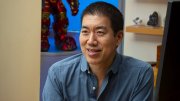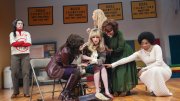A treasure buried in the basement of the Science Center for years, the Collection of Historical Scientific Instruments will at last be agreeably displayed in the fall of 2003 with the completion of additions and renovations to the Science Center (see "New Life for Old Instruments," November-December 2000, page 81). The $22-million project, three years in the planning, will begin next summer and is expected to last 20 months, says Jeffrey J. Cushman '69, capital-projects manager for the Faculty of Arts and Sciences department of physical resources. It will add 32,000 square feet in three segments, and a like area will be renovated.
Three new stories above the current administrative wing along Oxford Street will give leg room to the cramped history of science department. A new museum for the historical instruments will occupy the first floor, and new seminar rooms and offices will fill the second and third.
Two stories will rise on top of a roof at the west end of the building, and builders will make 1,800 square feet of new space on the roof of the sixth floor, behind the central staircase. Immediate beneficiaries will be the mathematics and statistics departments and the Bok Center for Teaching and Learning. Computer Services will expand in a reconfigured basement.
The three new segments of the building will likely be made of opaque glass of a nature yet to be revealed. They will look of a piece--and different from the rest of the 1973 building, a landmark creation of Josep Lluis Sert, Ar.D. '67, a former dean of the Graduate School of Design. The new construction is designed by Andrea Leers of Leers Weinzepfel Association.
The building of the Science Center was funded by an anonymous $12.5-million gift from the late scientist, innovator, and two-time College dropout Edwin Land '30, S.D. '57, cofounder of the now foundering Polaroid Corporation. Local myth has long held that the building was meant to resemble an early Polaroid camera, a suggestion that outraged Sert, says Cushman. After construction of the currently envisioned add-ons, any fancied resemblance to the camera will have blurred.





